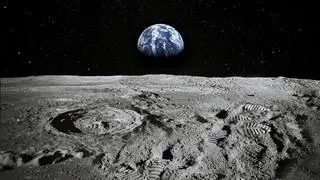Space travel may harm the brain in astronauts as exposure to galactic cosmic radiation could trigger Alzheimer’s, a new study has claimed.
The race for space tourism may be hotting up, but the practicalities of inter-galactic travel have hit a new obstacle as research for the first time showed that radiation exposure in space can lead to cognitive problems.
The Earth’s magnetic field generally protects the planet and people in low Earth orbit from these cosmic radiation, but once astronauts leave orbit they are exposed to constant shower of various radioactive particles, the ‘Daily Mail’ reported.
“Galactic cosmic radiation poses a significant threat to future astronauts. The possibility that radiation exposure in space may give rise to health problems such as cancer has long been recognised,” Senior Author of the study, Professor Kerry O’Banion from the University of Rochester Medical Centre (URMC) Department of Neurobiology and Anatomy said.
“However, this study shows for the first time that exposure to radiation levels equivalent to a mission to Mars could produce cognitive problems and speed up changes in the brain that are associated with Alzheimer’s disease,” O’Banion said.
Tests on mice with models of Alzheimer’s showed that after they were exposed to various doses of radiation, including levels comparable to what astronauts would be experience during a mission to Mars, they were far more likely to fail these tasks — suggesting neurological impairment — earlier than these symptoms would typically appear.
The brains of the mice also showed signs of vascular alterations and a greater than normal accumulation of the protein ‘plaque’ that accumulates in the brain and is one of the hallmarks of the disease.
“These findings clearly suggest that exposure to radiation in space has the potential to accelerate the development of Alzheimer’s disease,” said O’Banion.
“This is yet another factor that NASA, which is clearly concerned about the health risks to its astronauts, will need to take into account as it plans future missions,” O’Banion added.
With appropriate warning, astronauts can be shielded from some forms of radiation, but there are also other forms of cosmic radiation that cannot be effectively blocked.
The longer an astronaut is in deep space, the greater the exposure, which could prove a worry for NASA as the agency is planning manned missions to a distant asteroid in 2021 and to Mars in 2035, the paper said.
The researchers, who have been working with NASA for eight years, studied the impact of a particular form of radiation called high-mass, high-charged (HZE) particles which are propelled through space at very high speeds by the force of exploding stars and come in many different forms.








Comments
Comments have to be in English, and in full sentences. They cannot be abusive or personal. Please abide by our community guidelines for posting your comments.
We have migrated to a new commenting platform. If you are already a registered user of TheHindu Businessline and logged in, you may continue to engage with our articles. If you do not have an account please register and login to post comments. Users can access their older comments by logging into their accounts on Vuukle.